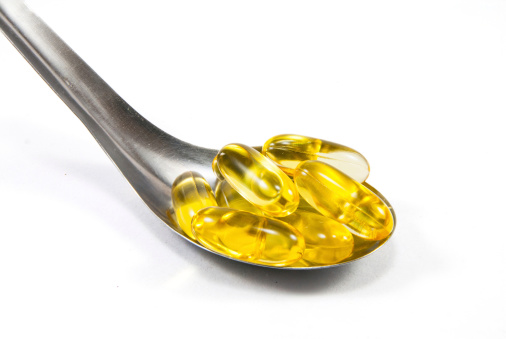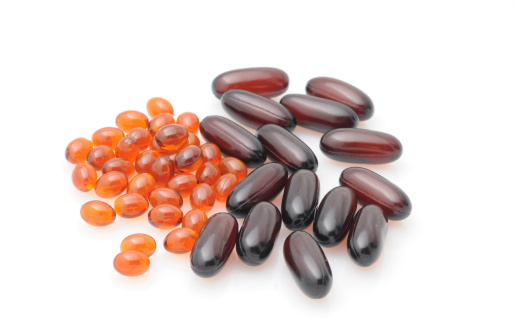There are several sources of omegas on the market, but which is best? WholeFoods Magazine reached out to several industry experts to hear their take on the matter, and here's what they had to say.
Learn more about marine omegas in our September issue, and about plant-based omegas in October.
The GREAT Omega-3 Debate
By Todd Norton, Vice President, Business Development, Aker BioMarine Antarctic US

Not all omega-3s are created equal. In fact, the way these fatty acids are delivered and used by the body varies with each option available. And as market growth in this category continues, consumers are looking for omega-3 options that are healthy, pure and sustainable.
Krill is currently the fastest growing segment in the omega-3 marketplace, and the second largest behind fish oil. But there are some misconceptions surrounding the category that need further explanation, particularly in relation to health benefits and sustainability.
First, krill are not fish – they are actually small shrimp-like crustaceans that float in huge swarms in Antarctic waters and feed on microscopic algae. By virtue of their environment (i.e., the Southern Ocean, one of the cleanest oceans on Earth) and their place in the food chain, krill do not accumulate heavy metals and contaminants to the degree that some other marine sources of omega-3s do. Further, in addition to being rich in EPA and DHA, krill also contain a potent antioxidant called astaxanthin, which helps keep the omega-3s naturally fresh and stable.
Second, krill’s omega-3s are different. They are mostly bound to phospholipids, which means they are directly incorporated into cell membranes upon consumption. This improves their availability to the tissues and organs that need them most (i.e., the heart, brain, eyes, skin and joints). According to two studies, at similar doses, krill reached higher concentrations in the blood than fish oil.
Finally, the Antarctic krill fishery is one of the most sustainably managed in the world. In fact, the ENTIRE fishery is allowed to harvest in one specific region, called Area 48, which is estimated to contain 60 million tons of krill. Here there are very strict regulations and catch quotas in place to make sure the krill biomass remains healthy at all times. Typically, the krill fishery harvests 1/3 of 1% of the krill in Area 48 on an annual basis, or about 200,000 tons.

Published on WholeFoods Magazine Online, August 22, 2013
Why DHA/EPA Are Best
By Daniel Wiley VP, Nutrition & Health, AlaskOmega® Omega-3 Concentrates
-
Demand Species Accountability. Stay away from generically labeled “fish body oils”. Ensure that you aren’t buying a blended oil, unless it is specifically labeled as a blend. It matters what species of fish was caught and where it was caught to make your fish oil supplements. Consumers demand species accountability for their seafood; for the health of the planet, it’s time that they did so for their fish oil supplements.
- Ensure Low Bycatch (the catch of non-target species). One of the most important sustainability questions to ask about a fish oil ingredient is “What else was caught and what did you do with it?” Health of an entire fishery ecosystem is directly related to the accountability that fishermen have with respect to the other fish, sea birds, mammals (dolphins, seals, and whales) that are caught. In many fisheries around the world, there is a tremendous amount of bycatch that goes unreported and uncontrolled. Catching the wrong fish (or other predators like sharks, dolphins, or whales) can upset the balance of the marine ecosystem and actually harm the health and future sustainability of the fishery.

Published on WholeFoods Magazine Online, August 22, 2013
Which Omega Is Best? Why Choose?
By  Rakesh Kapoor, Ph.D., Director of Science and Technology, Bioriginal Food & Science Corp.
Rakesh Kapoor, Ph.D., Director of Science and Technology, Bioriginal Food & Science Corp.
To even try and compare different omega fatty acids would be comparing apples and oranges; they’re both fruits, both are very nutritious and beneficial to our health. But to say one is better than the other would make no sense—they should both be enjoyed for optimal health. For the sake of this debate, I will concentrate on the more commonly debated omega: omega-3.
There is a debate about which source of omega-3 fatty acid is better—typically between marine and plant sources—and this debate often comes back to the fact that the conversion of ALA to longer chain fatty acids (EPA and DHA) is slow in the human body. The benefits of omega-3 fatty acids are mainly ascribed to longer chain fatty acids. At present, we do not understand the differential actions of different fatty acids. Nor do we understand what is the optimal level of different fatty acids and what level constitutes deficiency for optimal functioning of different organs, for healthy life. Research in humans cannot be designed to delineate the effects of individual fatty acids, due to the fact that ALA is converted to EPA and DHA, and DHA is retroconverted to EPA. These fatty acids individually modulate several genes and we do not understand the effects of all these gene products.
Lack of understanding should not be construed as lack of effect.
A secondary consideration in this debate is that vegetarian populations do not consume longer chain fatty acids. It is proven that vegetarian populations have much lower incidences of chronic diseases (heart disease, cancer, diabetes, inflammatory diseases and mental health issues like depression, etc.) than meat eaters. These populations have lower levels of longer chain omega-3 fatty acids in their red blood cells, brain and plasma.
There are benefits to be had from all omega-3 fatty acids, although there is still more research to be done on the specific mechanism of actions. But just as eating a variety of fruits is beneficial for optimal health, we should also be taking a balanced amount of all the fatty acids from a variety of sources, to receive the full spectrum of health benefits.

Published on WholeFoods Magazine Online, August 22, 2013
The Advantages of Krill Oil
By Wael Massrieh, VP of Scientific Affairs, Neptune Technologies and Bioressources Inc.
 The two most popular sources of omega-3 on the market are plant sources and marine sources. Plant sources are abundant, somewhat sustainable and can offer flexibility for vegetarians. The main disadvantage with plant sources of omega-3 is that they are almost entirely predominant type ALA, and inefficiently (2-5%) converted to EPA and DHA in some individuals. Therefore in reality, the amounts of dietary complements or functional bars or beverages that need to be consumed are impractical.
The two most popular sources of omega-3 on the market are plant sources and marine sources. Plant sources are abundant, somewhat sustainable and can offer flexibility for vegetarians. The main disadvantage with plant sources of omega-3 is that they are almost entirely predominant type ALA, and inefficiently (2-5%) converted to EPA and DHA in some individuals. Therefore in reality, the amounts of dietary complements or functional bars or beverages that need to be consumed are impractical.
Marine sources of omega-3 include fish oil, algae oils and krill. Algae oils share some of the plant sources advantages, however it falls short since they usually only provide DHA and not EPA.
Fish oils enjoy the advantage that most clinical studies that have been conducted have used some type of Fish oil. However, because of the popularity of this source, sustainability has become a major issue that has yet to be managed efficiently. In addition, many fish oil sources suffer from high level of heavy metals and toxins, which end up defeating the purpose of consuming fish oils in the first place.
Krill oil is the most recently discovered source of EPA and DHA. Pioneered by Neptune Technologies and Bioressources, this source in my opinion is the best. According to published evidence, Krill is sustainable and will remain that way as long as the major players maintain their diligence in responsibly harvesting this biomass under the supervision of unbiased independent agencies. From a biochemical perspective, krill oil is unique because most of the EPA and DHA are attached to phospholipid molecules. Phospholipids act as superior, highly efficient delivery systems, which not only increase the bioavailability EPA and DHA but help prevent fishy repeat and reflux, a common issue in fish oils. Furthermore, different krill oils contain different levels of astaxanthin. Astaxanthin provides exceptional stability and antioxidant potency and is a necessary component that can help distinguish premium quality krill oil. These additional components in krill oil make it the superior source of EPA and DHA since it ends up providing consumers with a broader spectrum of heart, joints, cognitive and women health benefits.

Published on WholeFoods Magazine Online, August 22, 2013









